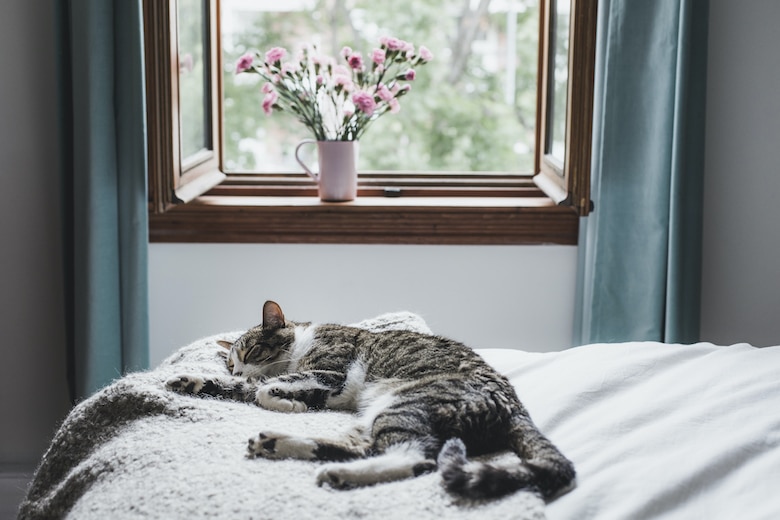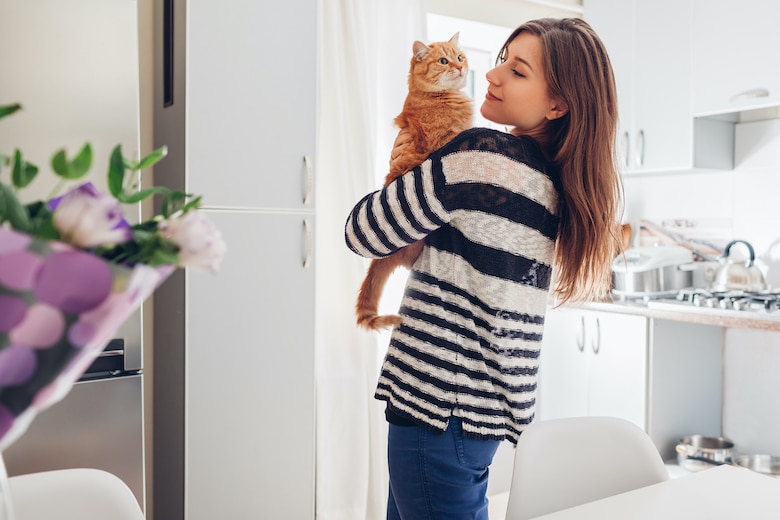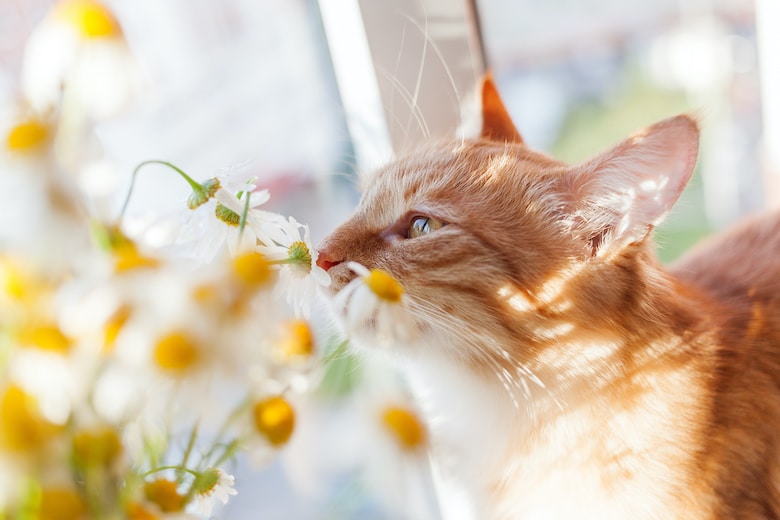Roses are red, violets are blue, you love your sweetheart but want to keep your cat safe, too.
Whether it’s Valentine’s Day, Mother’s Day or any day, flowers can bring a smile to a person’s face. But some plants pose health and safety risks for cats.
The good news: Roses are safe. The bad news: Some other favorite flowers are not. To help you figure out what flowers to keep out of your cat’s reach, we phoned Veterinary Emergency Group (VEG) Chief Medical Officer Lisette Lewis, DVM.

Photo: Linda Raymond/Getty Images
Are lilies dangerous to cats?
These flowers, which bloom in late spring, are especially popular around Easter. But they’re extremely dangerous for cats. “If a cat eats a lily, it’s going to cause kidney toxicosis,” says Dr. Lewis, adding that even a small portion of any part of the plant can harm Kitty. Sometimes, florists will label flowers as lilies that aren’t true lilies. “It’s got to be Hemerocallis or Lilium for it to be a true lily plant and cause the kidney problem,” Dr. Lewis says. Check the label or ask the florist to clarify what type of lily it is. If in doubt, opt for something else or plan to put it somewhere your cat can’t get it.
Look for vomiting, lethargy and a lack of appetite. Unfortunately, there’s more bad news: It can take one to five days for these symptoms to present, and by then Dr. Lewis says it may be too late. “If you think your cat got into a lily, consult a vet,” she advises.
Are poinsettias dangerous to cats?
You may have already heard poinsettias are toxic to animals. The reality is they aren’t good for them, but the risks are a bit overstated. “It’s not life-threatening,” Dr. Lewis says. That said, if a cat ingests a poinsettia, they may have some not-so-fun symptoms, such as vomiting. “It’s irritating to the mouth and stomach,” Dr. Lewis says.
Are tulips dangerous to cats?
These spring-blooming perennials look gorgeous when mixed into bouquets, but you’ll want to keep it out of reach of Kitty. “If a cat eats one, they are going to be lethargic and quiet,” Dr. Lewis says. Diarrhea is often a side effect that usually appears six to 12 hours after ingestion. The worst part of a tulip is the bulb, so if your cat is indoors, you can mitigate this risk by snipping the stem and putting it in a vase.

Photo: Maryviolet/Getty Images
Are daisies dangerous to cats?
This classic flower is fun to put in your hair, a crown or a bouquet. But keep it out of reach of your cat. “It can cause incoordination sometimes,” Dr. Lewis says. Other symptoms include diarrhea, salivation and vomiting. You’ll want to get the vet on the phone for this one. Left untreated, ingesting daisies can be fatal.
Are peonies dangerous to cats?
The holy grail of wedding flowers, peonies are toxic for cats. Symptoms, including vomiting, lethargy and diarrhea, typically present within about six hours, Dr. Lewis says.
What to do if your cat eats a flower?
Though lilies and daisies may carry the most risk, different cats may have different reactions after eating plants. It’s best to call a vet. If the vet calls you in, Dr. Lewis advises to “bring any information you have on the flower,” including labels or tags on a bouquet that explain what plants are in it. There’s not usually an antidote, but the vet can usually treat your cat. “There’s not anything we can do to reverse the effects, but we can” inducee them to vomit…and get three-fourths of the flower,” Dr. Lewis says. Your cat can make a full recovery.
Prevention is the best mitigation, so try to keep plants out of reach of your cat.
Featured Image: Aksenovko/Getty Images
Read Next: Valentine’s Day DIY: Kitty Cat Donuts
